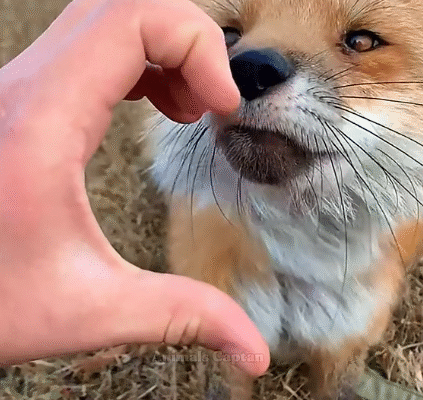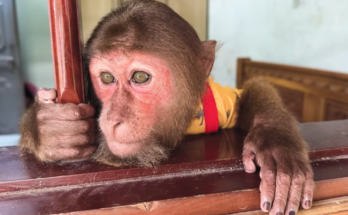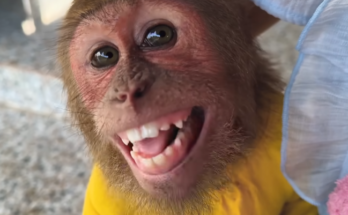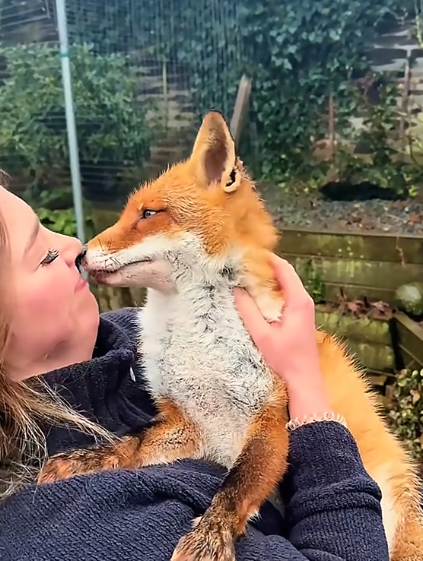
It was a chilly, quiet morning when the day’s first light began to paint the countryside in shades of gold. The air was crisp, carrying the scent of wet grass after a night’s dew. Sarah, a wildlife volunteer, was driving her old pickup along a winding rural road on her way to the small animal rescue center where she worked. Her morning routine was usually uneventful—watch the sunrise, sip coffee from her travel mug, and enjoy the peaceful drive. But that morning, something unusual caught her eye.
A small red tail was sticking out from the wheel well of a parked, abandoned sedan by the roadside. At first, she thought it might be a piece of fabric or a stuffed toy someone had tossed away. But as she drove past, the tail twitched ever so slightly.
Her heart skipped a beat.
Sarah pulled over quickly, parking behind the old sedan. Stepping out into the cool air, she approached slowly. The sight before her made her stomach knot—a young fox, its fur matted and dirty, was wedged awkwardly between the car’s rear axle and wheel well. It was trembling, breathing heavily, and there was a dark smear of dried blood on its side.
“Oh, you poor thing…” Sarah whispered, crouching down.
The fox’s amber eyes locked on hers, wide with fear. It tried to pull away, but its hind leg was stuck between the metal frame and suspension. Every attempt to move made it whimper softly, a sound that broke her heart.
Sarah knew wild animals could be unpredictable when frightened or in pain. She needed to approach carefully, both for her safety and to avoid causing the fox more stress.
She slowly backed away and grabbed her rescue kit from the truck—thick gloves, a blanket, a flashlight, and a pair of small bolt cutters she often carried for freeing animals caught in wires or traps. The challenge here was that the fox was lodged inside a part of the vehicle, and moving it without injury would take patience.

First, she scanned the car. It looked like it had been abandoned for months—flat tires, rust along the doors, moss growing on the roof. Perhaps the fox had crawled under it for shelter and gotten stuck while trying to escape a predator, or maybe it had been injured elsewhere and sought a hiding spot.
She spoke softly to the fox as she worked. “It’s okay… I’m here to help you. Just hold on.”
Wearing the gloves, Sarah gently laid the blanket over the fox’s head and upper body. Darkness can calm frightened animals, and she hoped it would reduce its stress. The fox squirmed at first but then stilled, its rapid breathing slowing a little.
Peering closer with the flashlight, she saw that its leg was caught in a small gap where a bent piece of metal had trapped it. She tried pulling the metal aside with her hands but it was rigid. The bolt cutters wouldn’t work on the thick frame, but she spotted a thin bracket nearby that, if removed, could create enough space to free the leg.
It took nearly twenty minutes of awkward maneuvering under the car, her clothes getting smeared with grease and dirt, but finally the bracket gave way with a sharp snap. She eased the fox’s leg free, careful not to twist or pull too hard. The animal gave a weak kick, then sagged onto the blanket.
Up close, she could see the injury better. The leg wasn’t broken, but there was a deep gash along the thigh, likely from the sharp edge of the metal. Blood had clotted, but the wound looked swollen and in need of cleaning.
Sarah wrapped the fox gently in the blanket, tucking its head so it couldn’t nip her in panic. She carried it to her truck and placed it inside a large pet carrier she kept for rescues.
As she drove toward the rescue center, Sarah kept talking in a calm, steady voice. “You’re safe now. We’ll fix you up. Just hang in there.” The fox made no sound, but its ears twitched faintly at her voice.
When she arrived, the small clinic was just waking up. Dr. Patel, the resident veterinarian, met her at the door.
“What have you got there?” he asked, peering into the carrier.
“Injured young fox,” Sarah replied. “Found it stuck in an abandoned car. Leg wound—might be infected.”
They worked quickly, transferring the fox onto the examination table. Dr. Patel sedated it for safety, then cleaned the wound thoroughly. “It’s lucky you found him when you did,” he said. “Another day or two, and infection could’ve set in badly. He’s underweight too—probably hasn’t eaten in a while.”
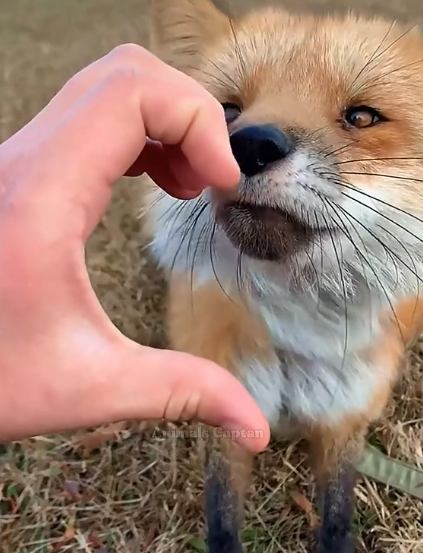
For the next week, Sarah visited the fox daily. It stayed in a quiet recovery enclosure, its leg wrapped in clean bandages. At first, it wouldn’t touch food when she was around, but she left bowls of cooked chicken and special kibble. Each morning, the bowls were empty. Slowly, it began to show signs of trust—its ears would flick toward her voice, and one afternoon she caught it watching her from the corner, eyes calm rather than fearful.
By the end of the second week, the wound had healed enough for the bandage to come off. The fox was stronger now, its coat shinier after good meals and rest. It even wagged its tail slightly when Sarah brought in a fresh dish of food.
One sunny morning, Dr. Patel gave the good news: “He’s ready for release.”
Sarah felt a pang of bittersweet joy. She’d grown attached to the little fox, but wild animals belonged in the wild. She and Dr. Patel loaded the carrier into the truck and drove to a quiet stretch of woodland far from roads.
Placing the carrier on the grass, Sarah opened the door and stepped back.
For a moment, the fox hesitated, sniffing the air. Then, with a graceful bound, it darted into the trees. It paused just once to glance back, its golden eyes meeting hers before disappearing into the forest.
Sarah stood there for a while, listening to the rustle of leaves. She knew she’d never forget that small, frightened creature and the fight it had shown to survive.
Driving home, she smiled to herself. Some rescues were messy, exhausting, and full of uncertainty—but moments like that, seeing an animal return to where it belonged, made every effort worthwhile.
That night, as she sat on her porch watching the sunset, she thought about how easily the fox could have been overlooked—just a flicker of a tail in the corner of her eye. It reminded her how important it was to pay attention to the small signs around us. You never know when a life might depend on it.
And somewhere out in the quiet forest, a once-injured fox was running free again, stronger and safer because someone cared enough to stop.
